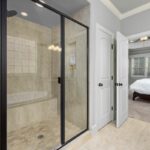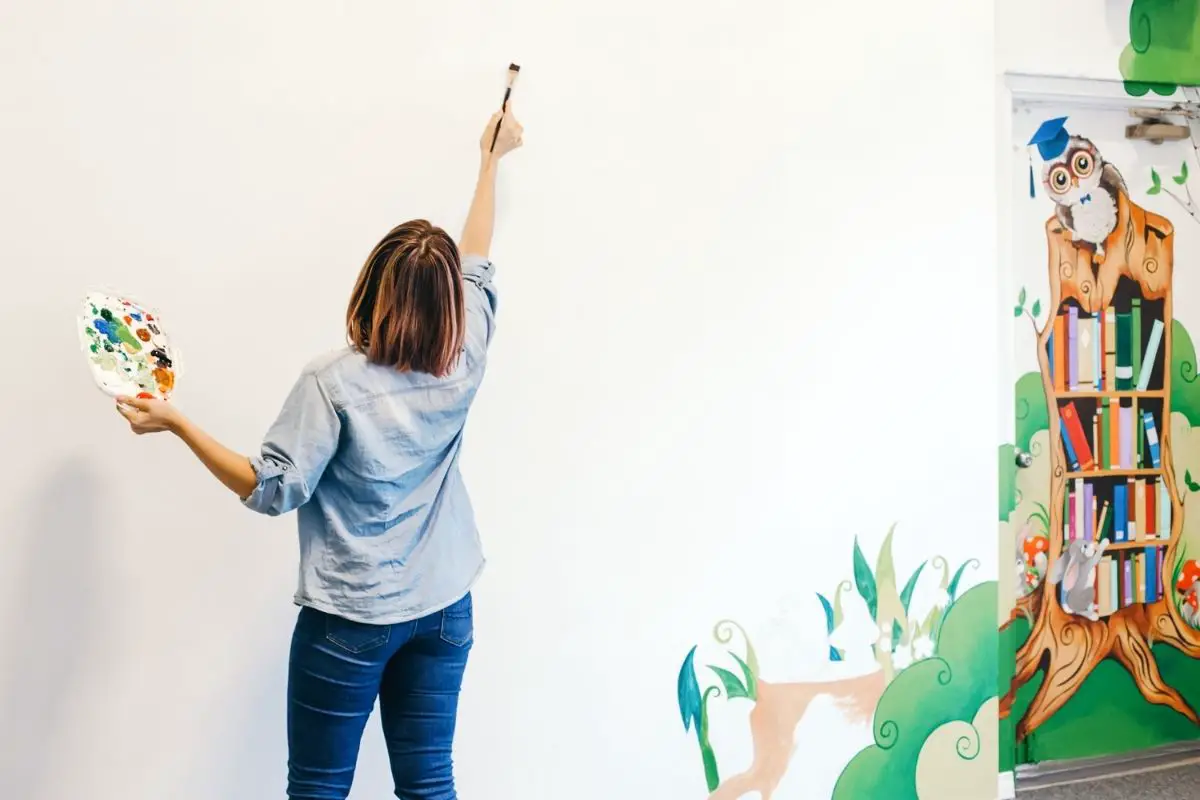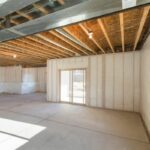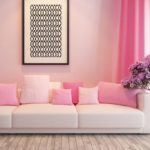How would you describe your home decor style? If you don’t want to go too far out of your comfort zone, you might consider going for a raw plaster finish.
This type of wall treatment has been around for centuries, and it gives your room a warm, natural vibe.
Plaster walls are a great way to add character to any space. They come in a variety of finishes, from smooth to textured, and they can easily be painted or stained to match existing colors.

The downside is that plaster walls require some maintenance, such as regular cleaning and sealing.
Plaster walls are a classic choice for those who love a rustic, old-fashioned look. Whether you prefer a clean, modern aesthetic or something more vintage, plaster walls can give your home a unique touch.
What Are Raw Plaster Walls?
A raw plaster wall is one without any finishing materials applied to it. It’s made by pouring a mixture of cement and water into a bowl and mixing.
The plaster is then applied to the walls so that it is smooth. Once the plaster sets up, it dries and hardens over time.
The finished result looks like this:
The texture of the plaster varies depending on what kind of plaster you use. We are going to go through some different kinds of plasters you can use in order to create that raw rustic plaster wall effect.
Lime Plaster
Lime plaster is made from limestone (usually burning limestone) which is mixed with water. Lime plaster is one of the most durable plasters out there. Once it is fully set it is hard and doesn’t chip easily.
What makes lime plaster slightly different from other plasters is that it not only has to dry but it also has to cure.
The curing process of lime plaster takes a long time and most lime plaster installations take a minimum time of four weeks to cure.
This is definitely something to consider as you most likely would not be able to use the room you are plastering for a long time.
When it comes to installing lime plaster, you do need a professional to do it for you. This is because there can be a harsh chemical smell when installing it.
Lime plaster isn’t used as frequently anymore as you can get similar effects with other products such as gypsum-based plasters.
However, when you use lime plaster you get a very contemporary and clean look on the walls.
So if you are hoping to have a durable and contemporary raw plaster wall, then you should consider using lime plaster to get the job done.
Gypsum Plaster
As we mentioned earlier gypsum plaster is replacing other plasters like lime plaster when it comes to plastering walls as it is a very popular choice.
So what makes gypsum plaster a good replacement? The main reason gypsum plaster is replacing others is that it is more budget-friendly compared to other plasters.
Gypsum plaster is the choice plaster for most decorators. It is a lot easier to apply compared to other plasters which means that people who are handy might be able to do this themselves.
Gypsum plaster can be applied to leave your walls very smooth. However, when you compare it to other plasters such as clay plaster it is not as breathable.
That being said, if you are on a budget but still want to achieve raw plaster walls, then gypsum plaster might be the one for you.
Clay Plaster
Clay plaster is one of the most distinguishable plasters. It has a natural pigment that is unmistakable.
Clay plasters are also available in a variety of colors. You have earthy colors that are darker but you also have the popular red/pinkish color.
The great thing about clay plasters is they come in various textures. You can use a fine clay plaster for a smooth wall or coarse clay plaster for a rustic-looking wall.
When clay plasters dry, there are usually different tones within the plaster. This adds to the rustic feel of clay plaster walls and makes them look cloudy.
One thing many people worry about when plastering a room is whether there will be enough humidity in the room.
Well, lucky for those who are considering using clay plaster, they won’t have an issue with humidity. Clay plaster is able to absorb moisture as well as release any moisture it has absorbed.
What this means is that it allows moisture to go back into the air, creating good humidity in the room.
This breathability makes clay plaster perfect for rooms like the kitchen and bathroom where there might be a lot of moisture in the air.
However, since clay plaster isn’t sealed, you shouldn’t use them for the shower.
So if you want to use a plaster that is already pigmented and breathable, then clay plaster is perfect for you.
Moroccan Plaster
If you do want to install a raw plaster wall in the shower then Moroccan plaster might be the best choice for you. Moroccan plaster is also called Tadelakt plaster.
This plaster is a lime-based plaster that is sealed with olive soap.
The great thing about Tadelakt plaster is that it is waterproof, so it is a good alternative to using clay plaster. Tadelakt plaster provides a nice smooth finish to any wall. It makes the room look sleek and contemporary.
It is also more eco-friendly compared to other plasters. However, one of the downsides of Tadelakt plaster is that it is easily stained. This might be a bonus for those who want to create a rustic look.
What Are The Difficulties With Plaster Wall?

There are not many difficulties with plaster walls and the difficulties that plaster walls have can be the desired effect by some.
One of the main difficulties with plaster walls is that they can crack and chip off. Whilst, some would argue that this provides a rustic finish, this may not be the desired look of others.
Though if you are going for textured walls this could be the perfect look for you.
There is also the issue with hanging mirrors or pictures on plaster walls. If you put the plaster over a solid wall this may not apply to you.
However, as plaster chips and cracks, drilling a hole into a plaster wall might cause damage elsewhere in the wall.
Though it is not a difficulty of maintaining plaster walls, the cost of plaster walls can be a difficulty of installing plaster walls.
If you are someone who doesn’t know how to plaster, then the overall cost of plastering walls can be quite high.
Can I Do Plastering Myself?
The simple answer to this question is yes, it is possible to do the plastering of your walls yourself. However, the question is whether you should.
Plastering walls is a difficult process. It takes up a lot of time. Also, the best results for plastered walls come from those who are already skilled.
With that in mind, it is completely possible to be able to do a good plastering job yourself. It just requires a lot of patience.
Is Drywall Better Than Plastering?
A lot of people often compare drywall and plaster. This is because these are the two most popular choices for installing a new wall.
The benefit of using drywall is that it doesn’t crack as plaster does. Also, drywall is often a lot easier to install than plaster. It also has the benefit of being cheaper.
However, when we think of the durability of both plaster and drywall, plaster is often more durable in the long run. Whilst plaster can crack and chip off, when it is dry it is a long stronger than drywall.
Drywall also doesn’t do well in rooms with high water as it can be damaged by water.
When it comes to answering the question of which one is better, it completely depends upon your individual needs. If you need something to be low budget and quick, then drywall might be the best fit for you.
If you want authentic plaster walls, then using real plaster might be the right choice for you.
Can I Make Drywall Look Like Plaster?
Yes! It is completely possible to make drywall look like plaster. In fact, there are a few methods you can choose from in order to get the look you want.
Knockdown Method
This method is quite simple. All it involves is using a machine to spray texture on your drywall.
You can leave the texture alone after spraying to get little round balls of texture on your wall, or you can smooth some of it out.
Using A Brush
If you don’t have access to a machine you can always add texture by hand. All you need to do is get a brush and dip it into a tub of wall texture and paint it onto the drywall.
This method allows you to choose the way the texture looks.
Using A Trowel
This is a tried and tested method, dating back years. All you have to do is use a short trowel and scrape the drywall mud onto the drywall. You have the freedom to choose how much texture you would like to add.
How To Drywall A Room
As we discussed earlier, we can make drywall look like plaster if you don’t want to completely plaster a wall. In order to do that you need to be able to install drywall in the room first.
Drywalling is a common term used by many people when referring to the process of creating drywall partitions. It is also called “drywall installation” or “drywall finishing”.
In this section, we will cover what exactly is drywalling and how to do it properly so you can make it look like plaster.
Drywall is made up of gypsum board panels which are attached with screws and nails to form a partition. Gypsum boards are usually 2×4 inches thick but there are other sizes available.
Some types of gypsum boards have paper between two layers of gypsum so they are lighter weight than others.
The basic steps involved in drywall installation include:
- Preparing the area where the drywall will be installed.
- Attaching the drywall panels using screws and/or nails.
- Sanding the seams and joints between the drywall panels.
This is not an exhaustive list of all the things that need to be done during a drywall project. However, some factors can make the drywall installation a little harder.
These factors include the size of the room being drywalled, the complexity of the design, the number of rooms being drywalled, whether custom trim needs to be added, and the amount of time needed for the project.
In addition to these factors, the quality of workmanship and the skill level of the workers performing the job will affect the final result.
If you are looking into doing drywall yourself, then you should know that there are several tools required for the job. You will need a power drill and screwdriver for installing screws and nails.
You will also need hammers and measuring tape to ensure that everything is square before attaching the drywall.
If you don’t feel comfortable tackling a DIY project, then hiring a professional contractor may be a better option.
Many contractors offer free estimates so you can get a rough idea of how much the project will cost.
Can I Use Paint To Achieve The Raw Plaster Look?
Yes, it is possible to use paint to achieve the raw plaster look. In fact, there are paints available that have been created to emulate the look of plaster walls.
This means you don’t have to strip your walls, you can just paint over them.
Final Thoughts
There are many ways you can achieve the raw plaster wall look in your home. Some ways might take longer than others to complete, some ways are cheaper than others, and some ways are a lot easier.
If you want to create an authentic look then actually plastering your walls might give you the look you desire.
However, if plastering is not an option for you then you can always use drywall or even paint that looks like plaster.
We hope this guide has helped you to work out how to achieve the rustic bare look. Please share this guide with others you might think would benefit.
Thank you for reading!
- Benjamin Moore Palladian Blue Paint: A Color Review - September 5, 2023
- 10 Of The Prettiest Interior Door Colors - August 29, 2023
- Hale Navy: The Best Navy Paint Color - August 22, 2023

![How To Design A Room Like An Interior Designer [Step By Step] ow To Design A Room Like An Interior Designer [Step By Step]](https://alexanderandpearl.co.uk/wp-content/uploads/2022/02/How-Much-Does-A-Pop-Up-Camper-Weigh-33.jpg)







